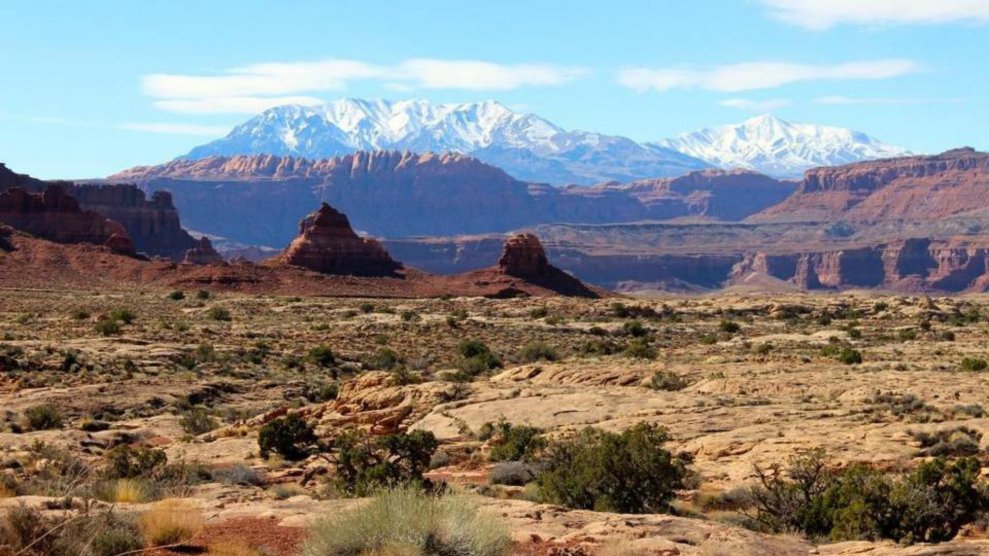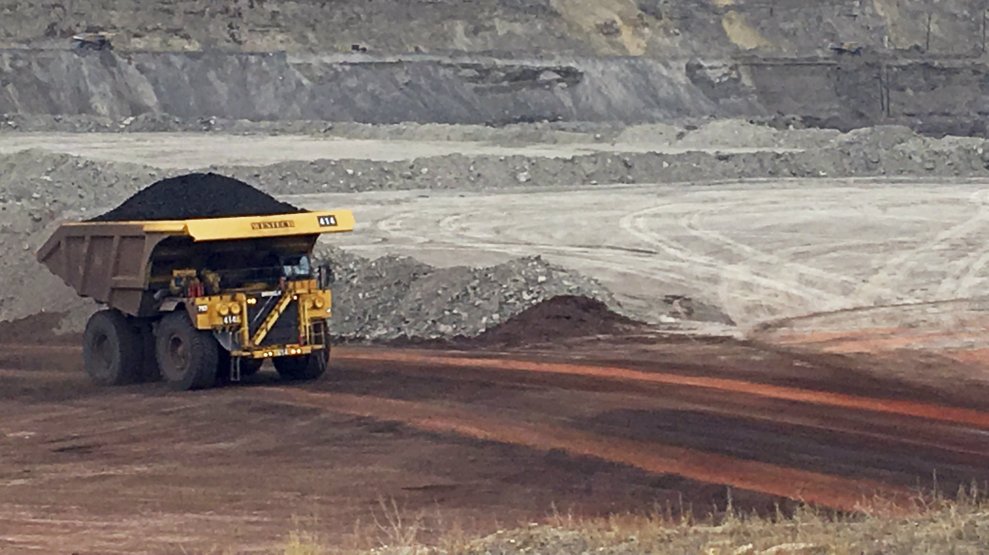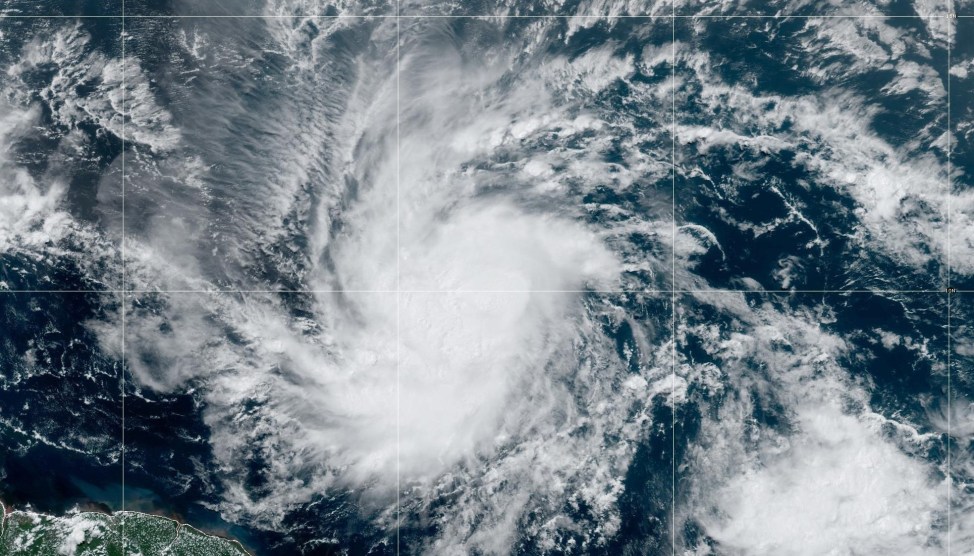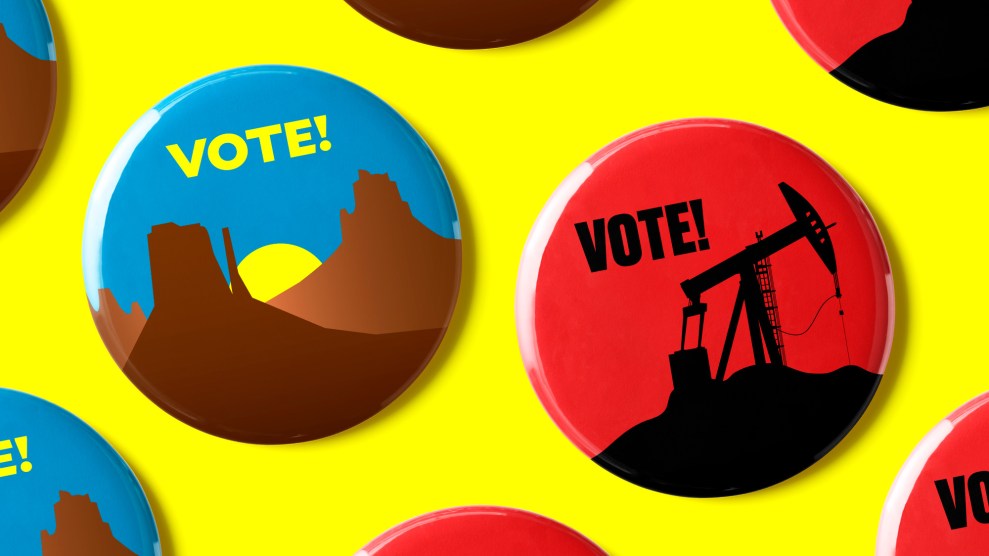
Mother Jones illustration; Getty
This story is a Climate Desk collaboration between Mother Jones and High Country News.
Walk through the Las Cruces farmers market on a sunny Saturday morning, and it soon becomes obvious that residents are really proud of the Organ Mountains-Desert Peaks National Monument. Its granite pinnacles dominate the landscape surrounding this town of a little over 100,000 people. Organ Mountain-Desert Peaks (OMDP) stickers and posters are taped up on storefront windows, customers clad in Organ Mountains Outfitters T-shirts stand at the local farmers market weighing their produce. The local coffee shop features bags of its specialty blend OMDP coffee. Chris Lang, the owner of Organ Mountain Outfitters, sees the local support of the monument, which includes five mountain ranges and archaeologically rich canyons, as analogous to the pride fans have for their favorite sports teams. MaryAnn Hendrickson, who has lived in Las Cruces for several years, said simply, “They are dramatic and they are beautiful.”
These businesses illustrate the economic impact OMDP has had on the region since then-President Barack Obama designated it an official national monument in 2014. Between 2015 and 2016, an additional 86,000 tourists visited the monument—an increase of 102 percent from the previous year. Their presence translates into big dollars for the local economy. An estimated $9.9 billion a year is spent on New Mexico’s outdoor recreation each year, according to the Outdoor Industry Association. Secretary of the Interior Ryan Zinke downplayed the amount of local support for national monuments in a leaked memorandum to President Donald Trump, which suggested that tourism revenue was not as high as some advocates had claimed.
So, last year when Zinke indicated he might reduce its size, and Trump included OMDP on a list of 27 monuments put under review in April 2017, residents worried about what would happen. Was it possible that administration officials would allow drilling or mining across its nearly 500,000 acres of land? During a two-day visit to OMDP last July, Zinke “flew over the national monument in a helicopter” and met with ranchers and other monument stakeholders, the Las Cruces-Sun News reported. In “thousands” of emails from residents, Zinke’s office received an overwhelming message, said Rep. Bill McCamley (D), who lives in Las Cruces: “There was just zero want from anybody to shrink the thing.” OMDP was ultimately left out of any of the proposed changes.
Voters in the West have always cared about the fate of their public lands, but this year is different. The Trump administration’s efforts to slash the size of national monuments, a historically unprecedented move, is bringing the issue into the national spotlight—and square in the minds of Westerners ahead of the midterms, said Peter Maysmith, senior vice president of campaigns for the League of Conservation Voters.
Apart from the potential environmental impact of opening up these lands to development, the economic benefits public lands offer local communities has made this issue central in key congressional races in New Mexico, Montana, and Utah. In New Mexico, for instance, more than 80 percent of voters polled by the Center for Western Priorities considered “public lands, parks and wildlife issues” an important issue in the midterms.
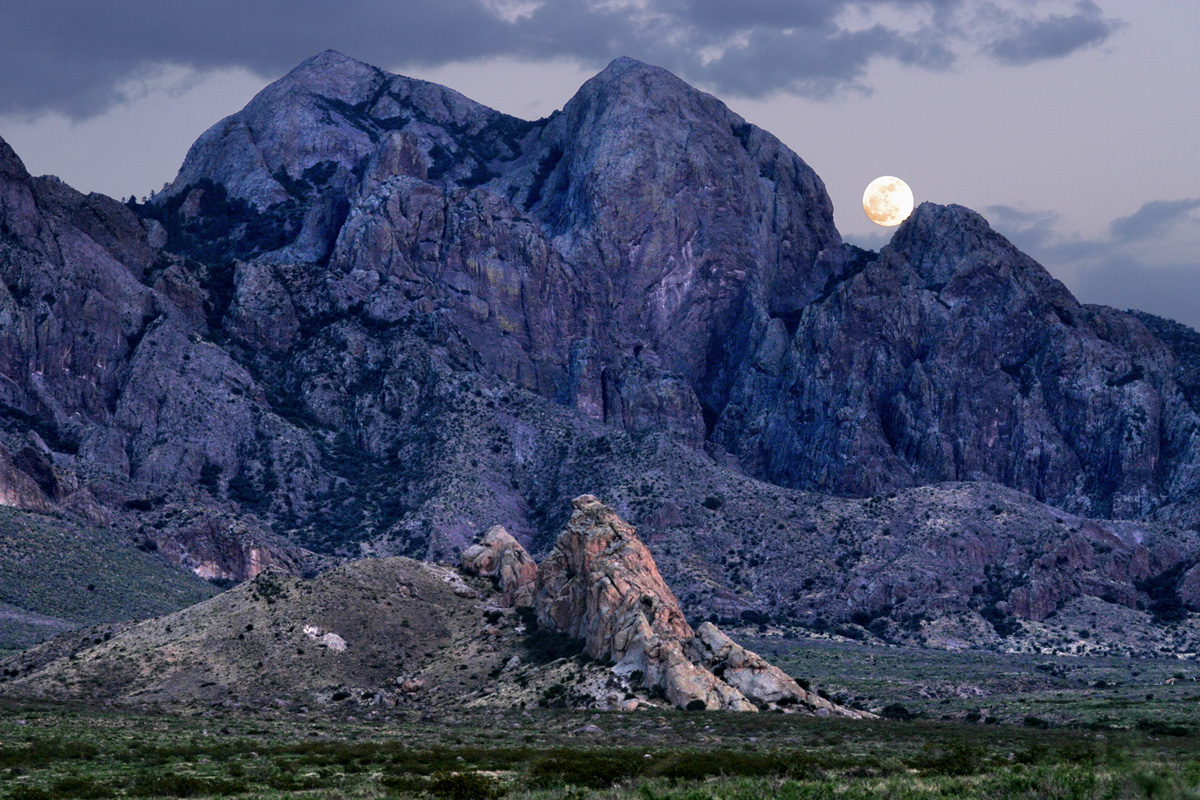
Baldy Peak and La Cueva are seen from Baylor Canyon Road. After the Organ Mountains were designated as a national monument in 2014, the range has become even more quintessential to the surrounding communities.
If that’s true, a historically Republican seat in the state’s second congressional district, which includes OMDP, could be flipped by 33-year-old Democrat Xochitl Torres Small, a water attorney who has called public lands “a common ground between us all.” In other parts of the West, including a competitive house race in Montana and a long-shot bid in Utah, Democratic candidates are capitalizing on the national attention the administration has put on public lands in the hopes of swaying voters.
Registered Democrats actually outnumber Republicans in New Mexico’s sprawling second district, which is is 99.6% rural. A Democrat won here in 2008, and decades before, a Republican was elected as a write-in candidate when the district’s longtime congressman died after the deadline for the GOP to formally nominate a candidate. A huge swath of conservative Independent voters have made Republicans ascendant here, but the 2nd District is far from ruby red. After Rep. Steve Pearce (R-N.M.) vacated the seat to run for governor, the nonpartisan The Cook Political Report included the district among its most competitive House races this cycle; The Report currently predicts the district to lean Republican. “I think all bets are off with that district,” said Dede Feldman, a former New Mexico state senator who now works as a political strategist.
To win the open seat, Torres Small and her opponent, four-term state lawmaker Yvette Herrell, will need to bridge the divide between the district’s two major population centers: the sparsely populated, oil-producing Permian Basin to the east and Las Cruces in the west, where a solidly Democratic city council voted in April to get 100% of its municipal energy from renewable sources by 2050. A poll conducted shortly after the primary has Herrell leading by two percentage points.

Xochitl Torres Small meets potential constituents in Tularosa, NM, a few days after winning the Democratic nomination.
In February, the Democratic Congressional Campaign Committee added Torres Small to its “Red to Blue” list, a designation that supplies promising candidates with more funding and resources. With the backing of EMILY’S LIST, a national organization that supports pro-choice candidates, Torres Small has outraised Herrell by more than $400,000. The oil and gas industry spent more than $40,000 on Herrell’s campaign, with major donations from huge petroleum firms like EOG Resources and Murphy Petroleum.
Torres Small and Herrell differ on virtually every issue—immigration, gun control and health care in particular—but none more so than on access to public lands. Torres Small, whose husband proposed to her during a trip to OMDP, once said she knows parts of the monument “better than the back of my own hand.” Herrell, who won a State Chair of the Year award from the conservative American Legislative Exchange Council, is known more for her support of the oil interests that dominate the southeastern part of the state. In 2015, she proposed a bill that would have made it easier to transfer federal land to the states. Her critics said the bill would provide a giveaway to “private interests” that want to develop on public lands.
A different type of access debate hovers over the race for Montana’s sole House seat, where Democrat Kathleen Williams hopes to unseat Republican Rep. Greg Gianforte to occupy the seat that was once held by Interior Secretary Zinke. Polling data shows that public lands, and access to them, will be important to voters in the midterms. In Montana, where hunting and fishing is an important part of the state’s heritage, counties with public lands attracted more new residents and spurred more job growth, more so than counties with a smaller share of federal land, according to a Headwaters Economics report. In a University of Montana survey, residents were more supportive of wilderness designations this year than in 2014. Voters are more likely to reject legislation that would reduce those protections, with 54 percent of those polled saying they do not want to eliminate existing wilderness areas.
Williams, who won an endorsement from the Montana Conservation Voters, said she voted “against bills that had any relevance to the transfer of public lands” during her time as a state house representative, including one that would have created a public land task force to review management of federal lands in the state. Gianforte is running for reelection after winning a high-profile special election in May 2017. Out-of-state donors, including the CEO and president of Texas-based Oasis Petroleum, dumped millions of dollars in total into the race to support Gianforte, who garnered unexpected national attention the day before the election when he body-slammed a reporter and pleaded guilty to a misdemeanor assault charge. Williams has not been shy about poking fun at the incident. In a recent campaign ad, she compared Gianforte to her dog, Danni, and said her pet “knows how to keep her cool, unlike another congressman we know.”
Montanans had become acquainted with Gianforte from his unsuccessful gubernatorial bid in 2016. One controversial issue that emerged during that race centered in part on a lawsuit Gianforte filed in 2009 to restrict access from his property to a small “meadow river” outside of Bozeman that was a popular trout fishing spot for anglers. River access points are no small thing in Montana, and Gianforte’s Democratic opponent, Gov. Steve Bullock, immediately seized upon news of the suit. “Montanans have been locked in a battle against wealthy out-of-state land owners buying up land and blocking access to places Montanans have literally enjoyed for generations,” he told the Missoulian at the time. “Ironically, the same time he was bringing this lawsuit in 2009, I was working with the legislature to get the first stream access law passed in 24 years.”
Gianforte’s stance on that issue could be a problem for voters, given his proposal to “unlock” 29 wilderness study areas—lands protected from mining and motorized access—in a set of two bills he introduced this year. Gianforte says the legislation, which would remove protections on almost 700,000 acres of land, would open the land back up to the public, but environmentalists argue that logging and possible oil and gas development could endanger wildlife and habitat. Many wilderness studies areas are already popular with backcountry users like hikers and hunters. As a member of the House Committee on Natural Resources, the congressman also supported a bill that would gut the Antiquities Act by limiting the amount of land that can be designated by executive authority and empowering the president to rescind national monument boundaries without congressional approval.
Often, the battles over preserving public lands or opening them up to development hinge on the relative economic developments of both. There is perhaps no place where there has been as much focus on this tension than in Utah, home both to Bears Ears and Grand Staircase Escalante national monuments. The Washington Post revealed last month that Interior Department officials had privately dismissed the economic benefits brought on by tourism for monuments like Grand Staircase-Escalante in a batch of internal emails the agency accidentally released. But these are exactly the benefits that Democrat Shireen Ghorbani hopes will play to her advantage as she seeks a spot as the House representative for Utah’s 2nd congressional district.
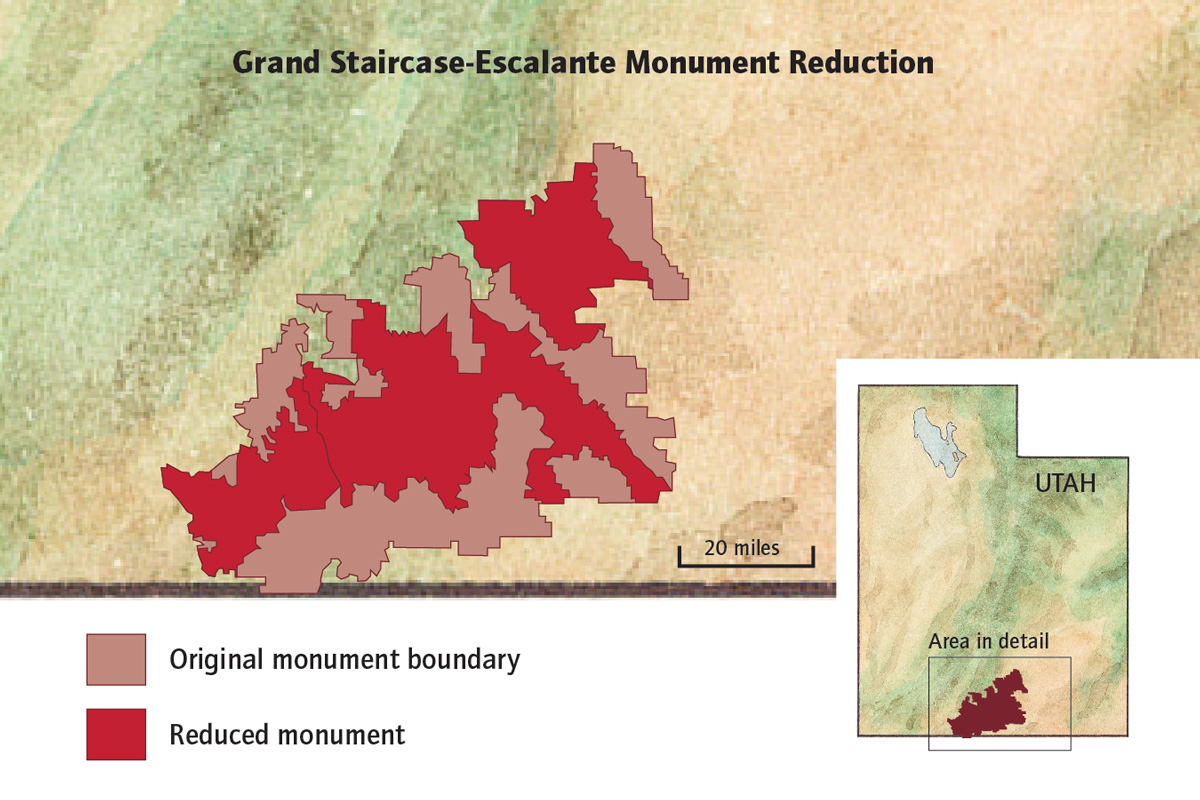
After the review of 26 national monuments, Grand Staircase-Escalante will be reduced by 46 percent. Communities around national monuments rallied to show opposition of the changes.
Ghorbani is considered a long-shot challenger in the district, which includes Escalante. The monument has driven economic growth in the district’s communities that have struggled with the boom and busts of the mining and timber industries. “It is one of the reasons why I think there is a message here,” Ghorbani, the Salt Lake City resident said. While a central tenet in her campaign is to make healthcare more affordable, her platform is largely based on protecting the district’s public lands. Her mascot, after all, is a grizzly bear named Bart. Her opponent, Rep. Chris Stewart, who is up for his fourth term, backed the monument review, which ultimately ended in a reduction of Escalante; he’s projected to win the race with the district rated as “solid” Republican by The Cook Political Report.
Nonetheless, Ghorbani is confident that voters care about public lands, especially if they were mobilized more effectively by advocacy groups and political organizers who could bring a rigorous economic perspective on the value of these natural resources. For example, last year Salt Lake City lost its contract to host the Outdoor Retailer, an outdoor industry expo that brought in $45 million annually, primarily because of a difference in opinion over public lands protections. The organization cut ties in order to partner with “states and elected officials who share our views on the truly unique American value of public lands for the people,” Amy Roberts, executive director of the Outdoor Industry Association, told The Salt Lake Tribune last February. Ghorbani thinks eventually these types of industries could use their economic influence to harness support for elections, where public lands are key, although she acknowledges that she was not sure if the momentum “has fully translated yet” among voters.
The importance of protecting public lands is still a hard sell for candidates like Ghorbani, where monuments can just as easily divide constituents who support resource extraction over recreation. But, the implications of the outdoor industry and job creation is becoming “more and more evident as time passes,” said Robert Keiter, Director of the Wallace Stegner Center for Land, Resources and the Environment. In 2016, for the first time ever, the outdoor recreation industry was included in the country’s GDP calculations. The 2016 findings were released in a government report in February, showing that the outdoor industry made up 2 percent of the national GDP. At $373.3 billion it was more than mining, oil and gas extraction combined. “I think it would be just about impossible for a politician to ignore that dimension of economic activity in the West,” said Keiter.

